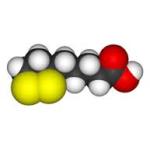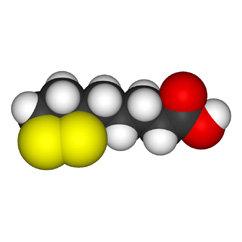More than Ingredients Make Cellgevity Unique
It’s more than the combination of ingredients that make Cellgevity unique. Its the reason why these ingredients have been used. Other glutathione precursors can help boost your body’s level of glutathione but as far as I know, it’s only Cellgevity that includes extra ingredients to support glutathione’s ability to work effectively in your body.
Ingredients
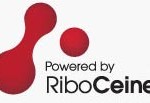
RiboCeine
RiboCeine
RiboCeine is the subject of twenty peer-reviewed published, scientific studies funded by the National Institutes of Health and others. Developed by Herbert T. Nagasawa, Ph.D.,RiboCeine has demonstrated that it can effectively deliver cysteine to the cells and enable them to produce the optimal levels of glutathione.
Based on a combination of two nutrients that are naturally found in the human body – Ribose and Cysteine, RiboCeine is activated by the body’s cells to release On Demand and effectively deliver the Cysteine necessary for optimal glutathione production, directly to your cells. RiboCeine has outperformed every other means of glutathione enhancement against which it has been tested. Read More
ALA-Alpha Lipoic Acid
Acid Alpha Lipoic Acid is a powerful antioxidant known to combat various forms of oxidative stress and to recycle other antioxidants. Lipoic acid is a naturally produced in the body and used by both animals and plants. Together with glutathione, they protect the fat and water portions of the cells from different types of free radicals.
As a nutritional supplement, Alpha Lipoic Acid seems to boost insulin sensitivity, and could be particularly helpful in addressing metabolic syndrome. It also acts with B vitamins to aid in the creation of energy from the proteins, carbohydrates and fats we eat. ALA has been looked at in connection with the treatment of diabetic neuropathy, liver ailments and glaucoma. It might even help to improve memory because of its protective effects on brain and nerve tissue.
Broccoli Seed Extract
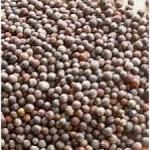 For up to 72 hours, the catalytic effect created by Broccoli Seed Extract (sulforaphane glucosinolate) will boost the activity of antioxidants in your body. Broccoli seed extract also protects against electrophiles which can damage DNA and helps cells neutralize toxins and carcinogens which are then ejected from your cells. It also helps to increase and restore glutathione levels in your body and activates the antioxidant enzymes used in the Phase II detoxification pathway
For up to 72 hours, the catalytic effect created by Broccoli Seed Extract (sulforaphane glucosinolate) will boost the activity of antioxidants in your body. Broccoli seed extract also protects against electrophiles which can damage DNA and helps cells neutralize toxins and carcinogens which are then ejected from your cells. It also helps to increase and restore glutathione levels in your body and activates the antioxidant enzymes used in the Phase II detoxification pathway
Curcumin
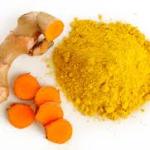 Curcumin is better known to most people as Turmeric Root Extract. Turmeric is that wonderfully pungent, brilliantly yellow spice that imparts its distinctive color to much Indian cusine (and also your white blouse if you’re not more careful than I was!) More importantly though, Curcumin is a powerful antioxidant that helps your body fight damage caused by free radicals and is also well known to help reduce inflammation. Supporting the work of the broccoli seed extract also in Cellgevity, turmeric root extract also helps to generate the Phase II enzymes that support what it known as the glutathione detoxification pathway.
Curcumin is better known to most people as Turmeric Root Extract. Turmeric is that wonderfully pungent, brilliantly yellow spice that imparts its distinctive color to much Indian cusine (and also your white blouse if you’re not more careful than I was!) More importantly though, Curcumin is a powerful antioxidant that helps your body fight damage caused by free radicals and is also well known to help reduce inflammation. Supporting the work of the broccoli seed extract also in Cellgevity, turmeric root extract also helps to generate the Phase II enzymes that support what it known as the glutathione detoxification pathway.
Resveratrol
Much has been written about resveratrol.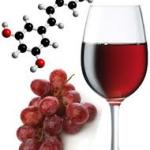 ( I, for one, used it as a joking excuse for my wine consumption- until I found out that it didn’t truly extend to white wine). Resveratrol is a powerful antioxidant found in grape skins and present in red and white wine, although using wine as your sole source of resveratrol will cause more harm than good. In supplement form however, resveratrol is an antioxidant with properties that protect your cardio vascular system.
( I, for one, used it as a joking excuse for my wine consumption- until I found out that it didn’t truly extend to white wine). Resveratrol is a powerful antioxidant found in grape skins and present in red and white wine, although using wine as your sole source of resveratrol will cause more harm than good. In supplement form however, resveratrol is an antioxidant with properties that protect your cardio vascular system.
Vitamin C
 Everyone is familiar with Vitamin C and many of its benefits are well known. What isn’t well known though is that Vitamin C is among the Network Antioxidants, which probably explains why it is in Cellgevity. Most antioxidants become useless after they have done their job and neutralized a free (oxy) radical, but the network antioxidants have the ability to recycle or rejuvinate each other.
Everyone is familiar with Vitamin C and many of its benefits are well known. What isn’t well known though is that Vitamin C is among the Network Antioxidants, which probably explains why it is in Cellgevity. Most antioxidants become useless after they have done their job and neutralized a free (oxy) radical, but the network antioxidants have the ability to recycle or rejuvinate each other.
Quercetin
Quercetin is a flavonoid antioxidant. 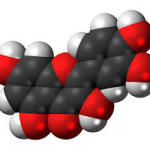 Flavonoids are an exceptional group of phytonutrients that belong to the category of polyphenols. They’re best known for their rich diversity of pigments (including the rich blues of blueberries and deep reds of raspberries). Flavonoids like Quercetin are valued for their antioxidant and anti-inflammatory activity and for supporting the cardiovascular and nervous systems.
Flavonoids are an exceptional group of phytonutrients that belong to the category of polyphenols. They’re best known for their rich diversity of pigments (including the rich blues of blueberries and deep reds of raspberries). Flavonoids like Quercetin are valued for their antioxidant and anti-inflammatory activity and for supporting the cardiovascular and nervous systems.
Read About More Cellgevity Ingredients
